History of the Museum
The Museum was founded in 1884, when General Pitt-Rivers, an influential figure in the development of archaeology and evolutionary anthropology, gave his collection to the University of Oxford.
Augustus Henry Lane Fox was born in 1827 in Yorkshire. In 1841, he entered the Royal Military Academy at Sandhurst and was commissioned into the Grenadier Guards in 1845. He fought for a short time in the Crimean War, and served in Malta, England, Canada and Ireland. He retired in 1882, at the age of 55, with the honorary rank of Lieutenant-General. In 1880, he unexpectedly inherited the estate and Pitt-Rivers name from his great uncle. The country estate was a substantial one, and Pitt-Rivers also received a large annual income; for the remainder of his life he was a wealthy landowner. In 1882 Pitt-Rivers was appointed the first Inspector of Ancient Monuments. He died in 1900, at the age of 73.
Pitt-Rivers's interest in collecting archaeological and ethnographic objects came out of his early professional interests in the development of firearms. Later he started to collect many other varieties of offensive and defensive weaponry, and then objects other than weapons. It is generally believed that Pitt-Rivers himself did very little field collecting but, in fact, he did obtain objects while on active service in Malta and during the Crimean War. Later in life he seems to have collected objects during working trips and holidays abroad. The vast majority of objects, however, came from dealers, auction houses, and fellow members of the Anthropological Institute.
The General gave his collection to the University of Oxford on condition that they built a Museum to house it, appoint a lecturer to teach about it and maintain the general mode of display. The Museum first opened to visitors in 1887 and was fully open by 1892.
The famous typological displays
In most ethnographic and archaeological museums, the objects are arranged according to geographical or cultural areas. At the Pitt Rivers Museum, they are arranged according to type: musical instruments, weapons, masks, textiles, jewelry and tools are all displayed to show how there are many ways of being, of knowing and of copying. Parallels and juxtapositions show how there are a great diversity of ways to solve similar problems in different time and by different peoples.
Many of the cases appear to be very crowded, as a large percentage of the total collection is on view. If you look carefully, you will see that a great deal of information is provided about individual objects, but we are conscious that there are many stories that remain left untold.
Why keep the old labels?
The labels are an important feature of the Museum's displays. Each object has a tag with basic information about it, including its unique ‘accession’ number to help staff keep track of it in the Museum's records.
The first labels used in the Museum were small, with handwritten information. These have been retained for the glimpses they offer into the mindset of the first Museum staff, as well as into the history of anthropology. Sometimes the labels are hard to read, but if we changed them it would change the feel of the whole Museum.
We are, however, conscious that some of the words used on the labels are derogatory and hurtful. Our project, “Labelling Matters” reviewed the main galleries, and a series of resulting display interventions installed in 2020 highlight the problematic parts of the Museum's and discipline's history, alongside podcasts and other online resources to help draw attention, aid discussion and shape ongoing work for further changes to the displays in the future.
Some of the museum labels contain a lot of information about the objects. The terms ‘coll.’ and ‘don.’ (or ‘d.d’) record who collected or donated an object. The origin of the object (country, region, and/or group) is always included. Sometimes the name on the old label is no longer in current use. Unfortunately, it is not feasible to change all the out-of-date names, but all new labels do, of course, use up-to-date names.
On many labels, there is a number in three parts; for example 1932.5.62. This is the accession number of the object. It shows the year the object came into the Museum (e.g. 1932), the collection it is part of (the fifth collection of the year), and its number in that collection (the 62nd).
Of course, the year in which an object was acquired by the Museum is not necessarily the year in which it was made. For example, an object given to the Museum in 1932 may have been made many years, or even centuries, earlier.



